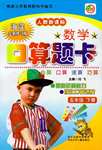
He developed _____ deep interest in geography when he was at _____ age of 8.
A. a; a B. a; the C. the; the D. the; a
 培优口算题卡系列答案
培优口算题卡系列答案 开心口算题卡系列答案
开心口算题卡系列答案 口算题卡河北少年儿童出版社系列答案
口算题卡河北少年儿童出版社系列答案科目:高中英语 来源:天利38套《2009高考模拟试题汇编附加试题》、英语 题型:050
| |||||||||||||||||||||||||||||||||||||||||||||||||||||||||||
查看答案和解析>>
科目:高中英语 来源:2014届江苏省高二上学期期中考试英语试卷(解析版) 题型:阅读理解
British Summer Time runs from the last Sunday in March to the last Sunday in October. In the depths of winter the nights in the UK are anything from 15-19 hours long. Longer nights mean frost and fog are more likely to form.
Twice a year the clocks change, forward in the spring and then back again in the autumn. But why? It happens twice a year. We all change our clocks and watches by one hour. In the spring, we add an hour, and go onto what is called British Summer Time, while in the autumn, we do the reverse, and return to Greenwich Mean Time.
Why bother?
It’s all to do with saving the hours of daylight, and was started by a guy called William Willett, a London builder, who lived in Petts Wood in Kent. Basically, he figured that you could improve the population’s health and happiness by putting forward the clocks by twenty minutes every Sunday in April and do the opposite in September.
Economics
His idea was not taken up, even though a “Daylight Saving Bill” was introduced some five years before the outbreak of World War One. But once the war started, it was considered wise to economics, to promote greater efficiency in using daylight hours, and in the use of artificial lighting. And so in 1916, “Daylight Saving Time” was introduced. Even though most countries abandoned this after that war, some eventually decided that it was a good idea, and most of these nations began to keep it throughout the year.
Experiment
Since 1972, Britain has decided to go with Greenwich Mean Time in winter, and British Summer Time in Summer.
But back in 1968, Britain tried a four-year experiment by advancing time one hour ahead of GMT throughout the year.
But those living further north, particularly in Scotland, found it most unsatisfactory, with dark mornings for much of the year, and the experiment was dropped.
But the arguments go on …and on.
1.Why some countries decide to change the clocks after World War One?
A.To improve the people’s health and happiness.
B.To do a certain experiment
C.To save energy to develop economies.
D.All of the above.
2.What can you infer from the passage?
A.The idea of changing the clocks suffered disagreement.
B.The people in Scotland don’t change the clocks.
C.The idea was first thought of by an educator.
D.It’s unnecessary to change the clocks.
3.What is the real meaning of the last sentence of the passage?
A.Nobody in the UK likes the idea.
B.All things need arguments.
C.The British are fond of arguments.
D.Different views of the idea still exist.
查看答案和解析>>
科目:高中英语 来源: 题型:单选题
查看答案和解析>>
科目:高中英语 来源: 题型:阅读理解
In March of 1895, Charles Francis Jenkins, a young government clerk in Washington entered into an agreement with Thomas Armat, a fellow student at the Bliss School of Electricity. Their aim was to develop a motion picture device(设备).
Jenkins had already invented a device for viewing motion pictures which he called the Phantoscope, based on the Edison Kinetoscope. With this experience the two were able to work quickly and by 28 May 1895 the two had developed a projecting version of the Phantoscope and applied for its patent.
That September, the two travelled to Atlanta with their invention and gave a public demonstration at the Cotton States Exposition. Although no evidence remains regarding the quality of their projections or the success of the show, one can guess that it was well received as shortly after this event the partnership broke up with each party claiming the invention to be their own work.
After the split the two worked independently on improving the Phantoscope. Jenkins had his version of the projecting Phantoscope ready by the first week in November 1895 making the first public demonstration on December 12 at the Franklin Institute in PhiladelphiA.
At the same time, Armat, upon perfecting his version, approached well-known entrepreneurs(企业家) Raff and Gammon who were excited by what they saw and approached Edison with the intention that he develop the machine.
Edison agreed and in February 1896 the Armat projecting Phantoscope was renamed the Vitascope and the name of ‘Edison’ was added for, as Raff and Gammon explained, effective popularization of the device.
The first theatrical exhibition took place on April 23 1896 at Koster and Bial’s Music Hall in Herald Square, New York City. The film that made the greatest impression on the audience that day was Robert Paul and Birt Acres“Rough Sea at Dover”.
1.The passage is intended to tell the readers about _________.
A.the disagreement between two inventors
B.the early technology of motion picture device
C.the development of films in competition
D.the partnership between two film lovers
2.What Francis Jenkins invented before any cooperation was a device ________.
A.called Phantoscope, for viewing motion pictures
B.called Kinetoscope
C.called Vitascope
D.the projecting version of the Phantoscope
3.People can guess that the invention of Jenkins and Armat was successful because ________.
A.the public demonstration made the greatest impression on the audience
B.there was some written records regarding the quality of their projections
C.there were some reports about the success of their show
D.the partnership broke up for both claimed the invention to be their own work
4.According to Raff and Gammon, the Armat projecting Phantoscope was renamed the Vitascope and was preceded by 'Edison’s' for __________.
A.the competition against Jenkins’ version
B.the Edison’s intention of developing the device
C.effective promotion of the device
D.the origin of the device in Edison’s research
查看答案和解析>>
科目:高中英语 来源:2010年江苏盐城中学高二下学期期末考试英语卷 题型:单选题
Before long he ______develop the shortcoming of being shallow and having prejudice, even against his old companions.
| A.forms | B.increases | C.develops | D.changes |
查看答案和解析>>
湖北省互联网违法和不良信息举报平台 | 网上有害信息举报专区 | 电信诈骗举报专区 | 涉历史虚无主义有害信息举报专区 | 涉企侵权举报专区
违法和不良信息举报电话:027-86699610 举报邮箱:58377363@163.com